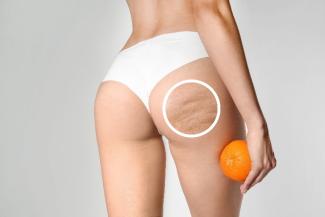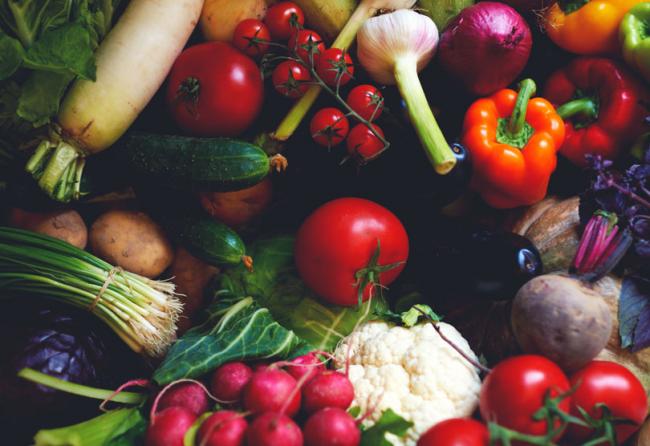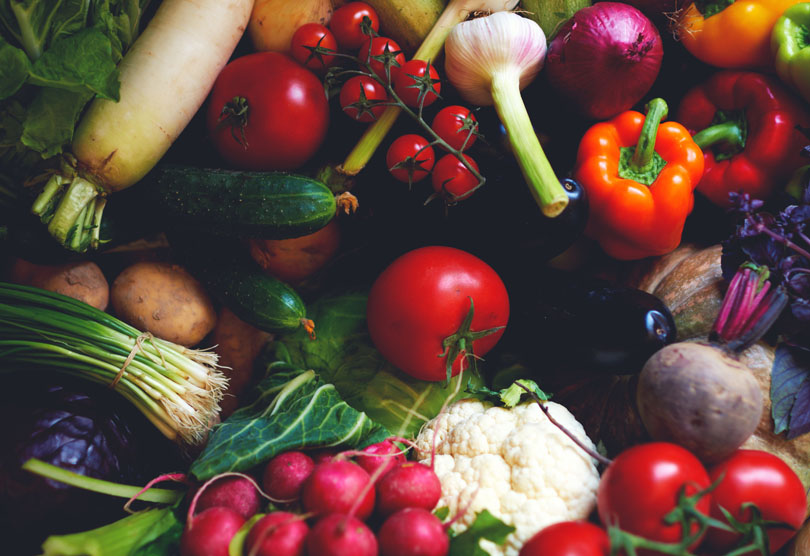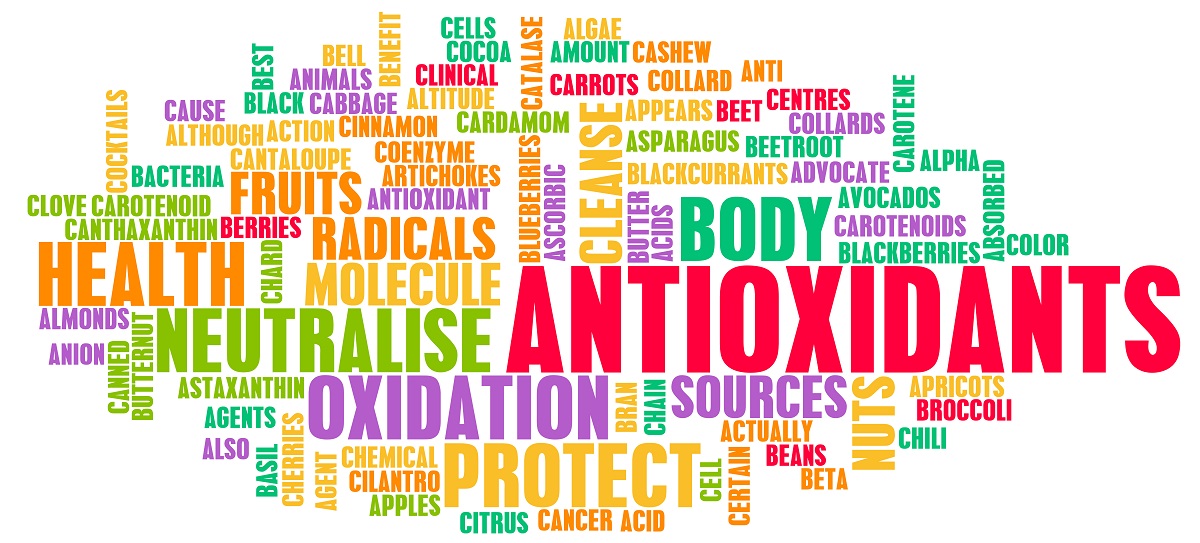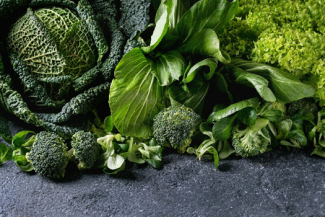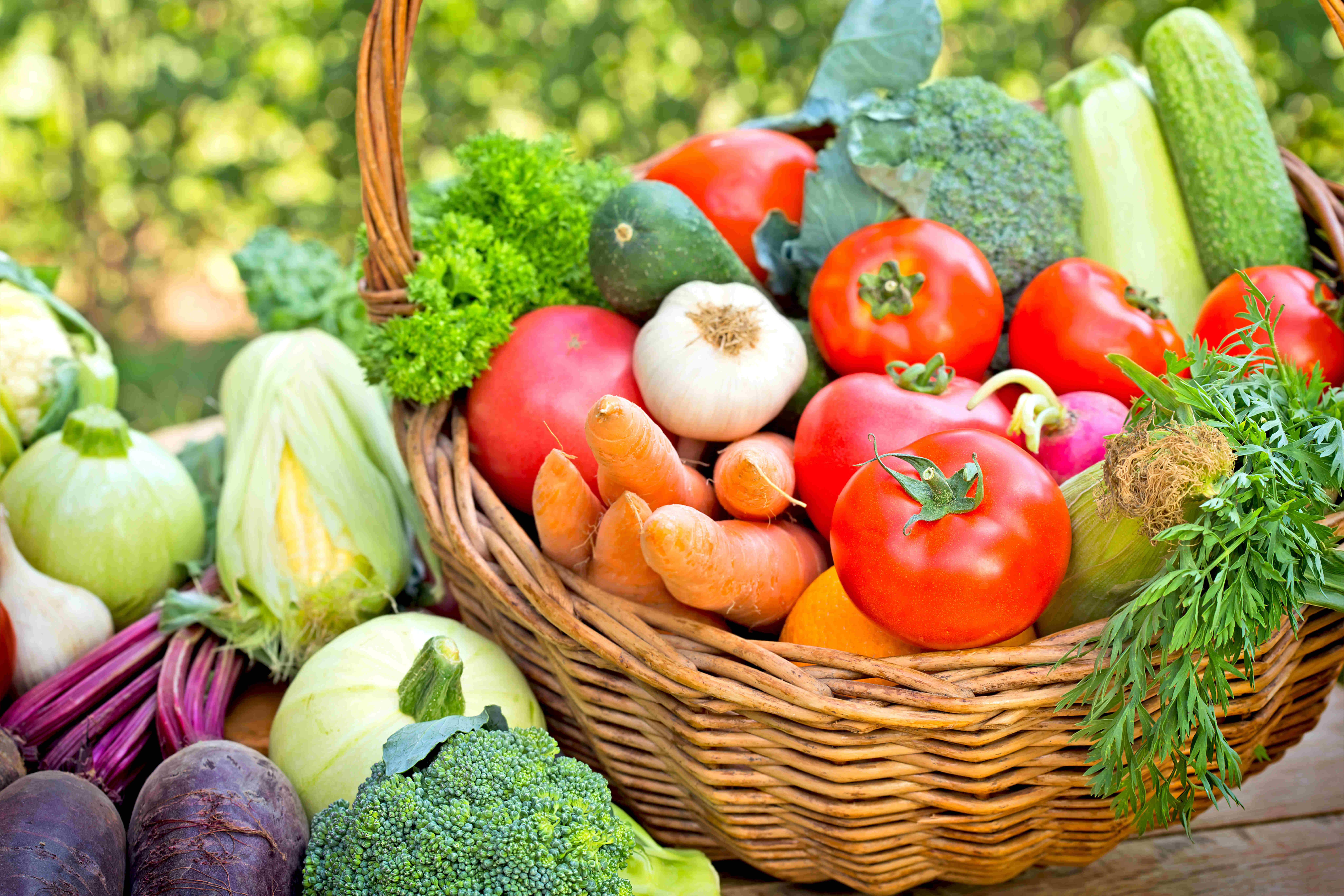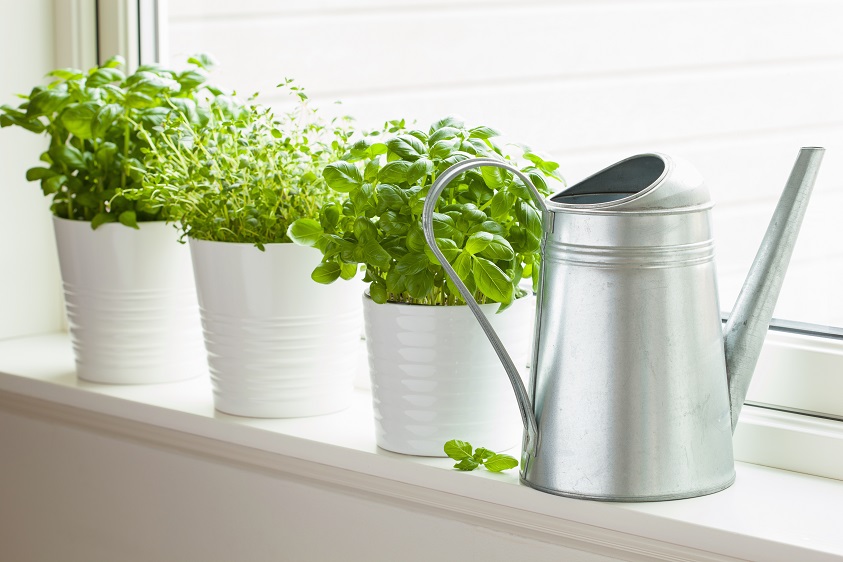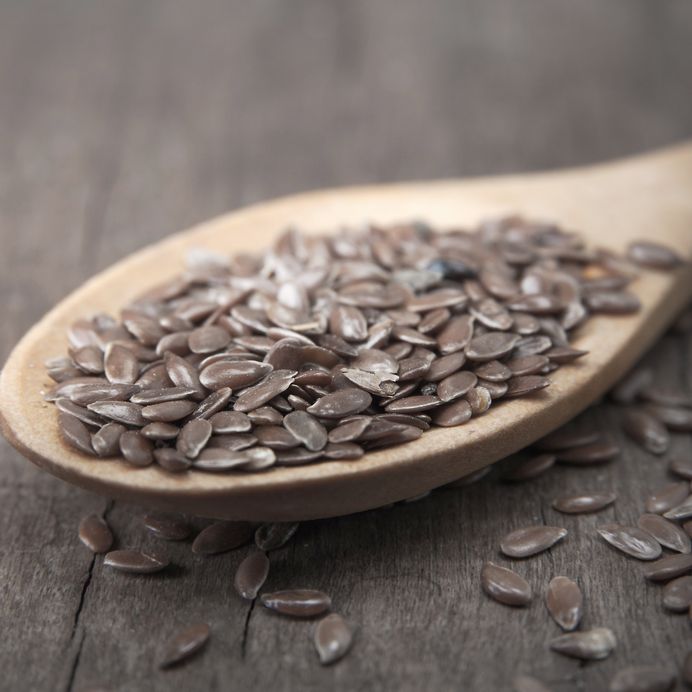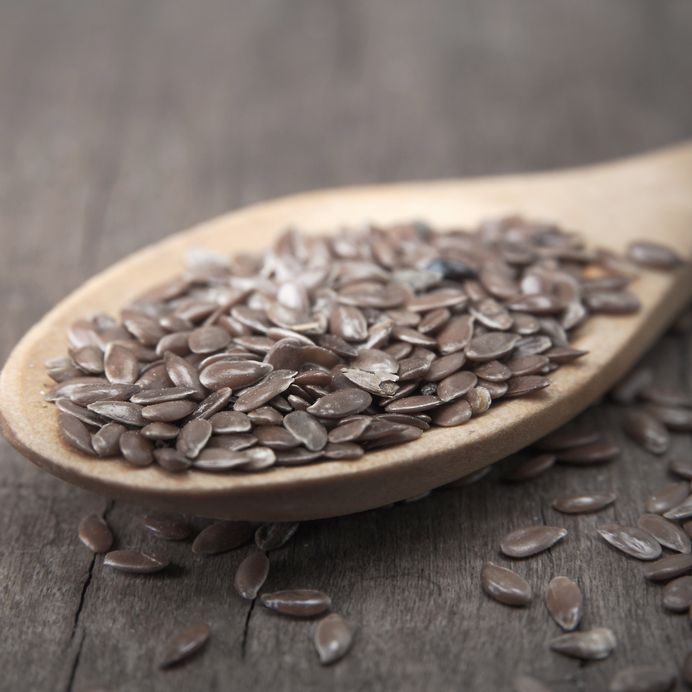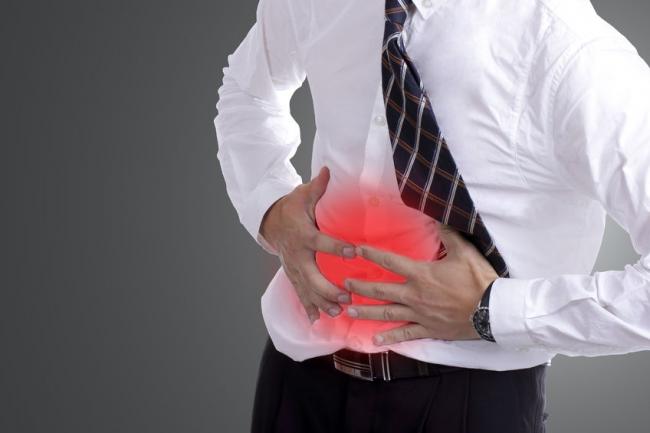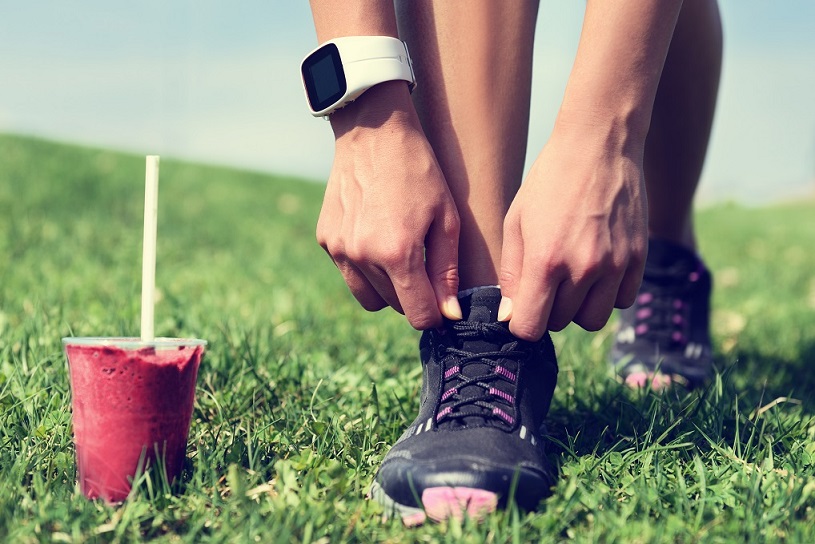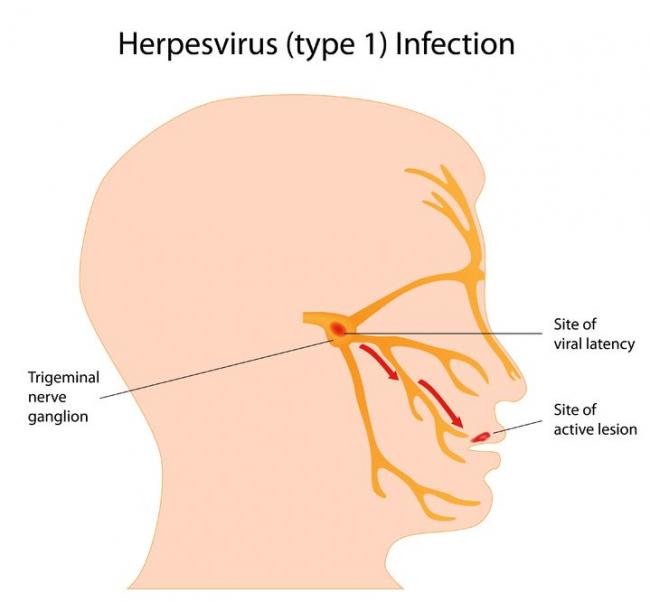Supplements for Cellulite Management
Cellulite represents a localized skin concern typically found over the posterolateral thighs, buttocks, and abdomen. The skin surface over such areas is often found to exhibit dimpling or an “orange-peel” appearance.[1], [2]
Despite a lack of detailed epidemiological data, it has been estimated that cellulite occurs in over 80% of postpubertal women.[3], [4] A well-established, sex-based aspect contributing to its occurrence is the arrangement of the fibrous septa (strand-like structures): These connect the skin tissue above them to the deeper fascia below. In women, such septa sit perpendicular to the skin, whereas in men, they are found to be positioned at an oblique angle. This orientation makes it easier for the surrounding adipose (fat) tissue to protrude into the dermis of the skin to create the dimpling effect.[5], [6]
In addition to this, numerous other contributing causes are believed to be involved in cellulite formation. Some of these include genetic predisposition, lifestyle factors such as excess carbohydrate intake (which leads to hyperinsulinemia, promotion of lipogenesis, and ultimately, increased adipose cell size), and a sedentary lifestyle (itself negatively impacting both general blood flow and microcirculation within areas of cellulite).[7]
Female sex hormones, such as the elevations in estrogen occurring during pregnancy, also play a role in cellulite development,[8], [9] while both smoking and alcohol consumption are also considered potential contributors.[10]
Histologically, features include disrupted blood flow (venous) and lymphatic drainage, together compromising local microcirculation,[11] and chronic inflammation around the reticular fibre network for which adipose (fat) cells are embedded, leading to increased reticular fibre numbers and thickness, further affecting circulation and skin appearance.[12]
A more recent and notable finding is the role of adiponectin. This is a hormone derived primarily from subcutaneous fat cells themselves, which has demonstrated anti-inflammatory and vasodilatory effects, and its expression has been shown to be reduced with an increase in local fat mass.[13] Findings from a recent human case-control study suggests that an impairment in the secretion of adiponectin from subcutaneous fat stores may contribute toward the development of cellulite.[14]
This last point may be of clinical importance, as we will see, given how dietary adjustments have been found to positively impact the release of adiponectin, potentially offering another method to target cellulite reduction via diet and supplementation. Clinically, both the Nurnberger-Muller Scale and the Cellulite Severity Scale are among the primary classification systems used for evaluation and response to treatment.[15]
This article will explore some of the evidence surrounding nutritional and herbal oral supplements directed toward the management of cellulite.
 Bioactive Collagen Peptides
Bioactive Collagen Peptides
Building off research demonstrating a positive effect of collagen-peptide supplementation on measures of skin elasticity and levels of both collagen type I and elastin in a human skin–aging trial, its effects in the context of cellulite treatment were explored.[16]
It was postulated how—since cellulite, and particularly the skin-dimpling effect, involve changes to the dermal skin and local connective tissues, which are together weakened by alterations to the extracellular matrix—supplementation with bioactive collagen peptides (BCP) can help restore and normalize the extracellular matrix proteins and reestablish optimal skin and tissue structures.[17]
In a randomized, double-blind, placebo-controlled trial, 105 female subjects (24–50 years of age) exhibiting moderate cellulite on their thighs were allocated to either receive 2.5 g of BCP or a placebo, each day, for 6 months. Within each group, participants were further classified by their body mass index (< 25 as normal weight, or > 25 as overweight). Investigator-graded cellulite appearance according to a modified Nurnberger-Muller Scale as well as instrument-based skin-surface assessments for both skin waviness and dermal density were measured at baseline and at the 3- and 6-month marks.[18] The table below summarizes those findings reaching statistical significance.
Noted findings reaching significance for treatment group as compared to baseline or placebo group [19] |
|
Investigator-Graded Cellulite Appearance |
|
|
After 3 and 6 months: |
Improved cellulite scores for both the group as a whole, and subpopulation of those with BMI > 25, as compared to baseline [p < 0.05] |
|
After 6 months: |
Improved cellulite scores for subpopulation of those with BMI < 25 [p < 0.05] |
|
After 3 and 6 months: |
Improved cellulite scores for the group as a whole as compared to placebo [p < 0.05]. For those with a BMI < 25, a 9% average reduction in cellulite score was achieved compared to placebo, while those with a BMI > 25 experienced a 4% score reduction by 6 months as compared to the placebo group |
Skin Waviness Assessment |
|
|
After 6 months: |
An 8% reduction in skin waviness was found for all BCP-treated subjects as compared to the placebo group [p < 0.05] |
Skin Density Assessment |
|
|
After 6 months: |
A progressive loss of dermal density, representing a 3.1% reduction, was found in the placebo group [p < 0.01], but was not observed to occur in the treatment group |
|
After 6 months: |
The BCP group demonstrated increased dermal density compared to the placebo group [p < 0.05]. |
Although further research is warranted regarding the use of collagen peptides for cellulite, this does open the door for exploring treatments which target key components of the skin and local tissue’s supportive structures.
 Chokeberry Juice
Chokeberry Juice
A rich combination of various antioxidants—including proanthocyanidins, flavonols, and phenolic acids—characterizes the composition of chokeberry, the fruit of the aronia shrub (Aronia melanocarpa).[20]
Already having enjoyed some exploration and research for use in managing risk factors for cardiovascular disease (including effects on blood lipids/cholesterol, glucose, hemoglobin A1c, and blood pressure, among others), the effect of this functional food/supplement on cellulite was studied.[21]
The study cites a number of possible ways in which the antioxidants from chokeberry juice could positively affect cellulite. These include improving microvascular blood flow and interstitial fluid formation; enhancing the repair of blood vessel damage, which underlies the permeability of fluid moving through them; the restoration of endothelial cells and function; an anti-inflammatory effect via the mitigation of prostaglandin type 2 release; and, finally, a beneficial impact on fat metabolism.[22]
In a single-arm interventional study, 29 women (25–48 years of age) classified with grade 2 cellulite (as per the Nurnberger-Muller scale) consumed 100 ml of organic chokeberry juice daily for 3 months, with no other changes to diet, exercise, or lifestyle. At baseline, day 45, and day 90, most instrument-based assessments were made. These included ultrasound-based analysis of skin and subcutaneous structures (such as dermal/epidermal thickness, length of subcutaneous tissue fascicles, and presence of local swelling/edema) and anthropometric measures (such as body mass index, total body fat, circumference of thigh and hip). Digital photo comparisons of the upper back and front thigh as well as biochemical evaluations were also performed at baseline and at the study’s end (including blood lipids, liver enzymes, and glucose, among others). In addition, subjects completed questionnaires once the study was complete.[23]
Pertinent findings reaching statistical significance for the study group (as compared to baseline) were found on ultrasound measures, and included an average reduction in both subcutaneous tissue thickness and the combined measure of dermal and subcutaneous tissue thickness by 9.5% and 9.6%, respectively, at the day‑90 mark [p < 0.05]; a reduction in the average length of subcutaneous fascicles from 2.96 ±0.72 mm to 1.61 ±0.35 mm by day 90 [p < 0.05]. The authors also reported on how the presence of subcutaneous edema was noted in approximately 55% of subjects at baseline. This decreased to just under 21% by day 45, and then to 0% of subjects by day 90.[24] Regarding the digital photograph assessments, of the ten independent evaluators reviewing them, five expressed a noticeable improvement by day 90. Finally, for the questionnaire analysis, just over 41% of subjects reported noticing an improvement in their cellulite severity, 48% did not notice any change, and the remaining subjects were ambivalent. Interestingly, 69% of subjects did report an improvement of skin tightness. The most common side effects reported were digestive in nature, such as constipation and diarrhea, by approximately 14% of subjects.[25]
 Insights from an Herbal Combination Supplement
Insights from an Herbal Combination Supplement
Exploring the effects of various herbal and nutrient-based substances on cellulite—especially its relation to impaired microcirculation and lymphatic flow in the areas for which blood and lymph vessels mesh around fat cells—was a key goal for another group.[26]
In brief, one of the studies they reported on found that a pair of formulas, each combining the same specific set of herbals (save for a patented ingredient), led to several effects in the treatment of cellulite over the course of the 47‑day, randomized, placebo-controlled trial. Noted ingredients found in both of the tested formulas are listed in the table below. Various clinical assessments were performed, with half of the subjects in each arm of the study also having additional instrumental evaluations, such as video capillaroscopy, which explores capillary flow and density.[27]
Some of the notable within-group effects achieving statistical significance by study’s end for both test formulas (designated as A and C), but not found for the placebo group, were as follows: reductions in fat mass index (3% reduction in group A and 7.1% reduction in group C; both p < 0.001); thigh circumference (1.7% reduction in group A and 3.6% reduction in group C; both p < 0.001); increased capillary blood flow (16% increase in group A and 25.5% increase in group C; both p < 0.001); capillary density (33% increase in group A and 196% increase in group C; both p < 0.001); as well as echographic assessments showing a decrease in lipedema and consequent swelling of fat tissue (30% reduction in group A and 37% reduction in group C; both p < 0.001).[28] Investigator and self-assessment questionnaires also demonstrated significant benefits for both groups as compared to placebo for parameters such as cellulite improvement and satisfaction with treatment (both p < 0.001).[29] Although this research is encouraging, larger trials with a longer length of follow-up are still needed.
Key ingredients found in test formulas [30] |
|
Plant |
Possible Anti-Cellulite Effect(s) |
|
Ginkgo biloba |
Enhanced blood flow through anti-platelet-activating factor (PAF) activity |
|
Antioxidant |
|
|
Centella asiatica (gotu kola) |
Increased activity of fibroblasts, including collagen synthesis |
|
Fucus vesiculosus (bladder wrack) |
Augmentation of metabolism |
|
Decrease of edema |
|
|
Mellilotus officinalis (sweet clover) |
Increases capillary resistance |
|
Decreases vascular permeability → reduction of tissue edema → improved lymphatic circulation |
|
|
Vitis vinifera (grape) seed extract |
Antioxidant |
|
Competitive inhibitor of enzymes which degrade skin-supportive structures (elastase, collagenase, hyaluronidase) |
|
|
Protection of capillaries |
|
|
Augmentation of tissue oxygenation |
|
 Food for Thought: The Potential Role of a Vegetarian Diet and Supportive Supplementation
Food for Thought: The Potential Role of a Vegetarian Diet and Supportive Supplementation
Discussed earlier was the emerging evidence connecting lowered levels of adiponectin with cellulite formation.[31]
Interestingly, recent evidence has suggested that a vegetarian diet may offer an adiponectin-increasing effect. This was among the findings in a 6‑month, randomized, open study comparing the effects of a vegetarian diet to a traditional diabetic diet in a group of participants with type 2 diabetes.[32] Specifically, those following a calorie-restricted vegetarian diet achieved a 19% increase in total plasma adiponectin from baseline, as compared to the control group consuming a calorie-restricted diabetic diet (p = 0.02).[33]
The hope is that such a potential connection would foster additional research looking to specifically test and elucidate this potential effect for a plant-based diet on the development, progression, and/or management of cellulite. Functional foods and supplements which support the ability of one to follow a vegetarian diet could, at least theoretically, play an important adjunctive role in helping individuals successfully achieve such a dietary approach. Examples would be using plant-based protein powders in making smoothies and consuming plant-based meal bars. In addition to the general health benefits of a vegetarian diet, this could also complement research demonstrating a benefit of weight loss and exercise on cellulite.[34], [35]
As our understanding of the factors underlying the development of cellulite improves, so too does this provide the opportunity to explore how herbal- and nutrient-based compounds may be in a position to influence such processes. As exciting as this emerging realm is, further research in this arena is still very much needed. This will ultimately help establish the role such agents can play within the landscape of treatment options in managing cellulite.
References
[1] Luebberding, S., N. Krueger, and N.S. Sadick. “Cellulite: An evidence-based review.” American Journal of Clinical Dermatology, Vol. 16, No. 4 (2015): 243–256.
[2] Bass, L.S., and M.S. Kaminer. “Insights into the pathophysiology of cellulite: A review.” Dermatologic Surgery, Vol. 46, No. 1, Suppl. 1 (2020): S77–S85.
[3] Luebberding, Krueger, and Sadick. “Cellulite: An evidence-based review.”
[4] Bass and Kaminer. “Insights into the pathophysiology of cellulite.”
[5] Luebberding, Krueger, and Sadick. “Cellulite: An evidence-based review.”
[6] Emanuele, E., P. Minoretti, K. Altabas, E. Gaeta, and V. Altabas. “Adiponectin expression in subcutaneous adipose tissue is reduced in women with cellulite.” International Journal of Dermatology, Vol. 50, No. 4 (2011): 412–416.
[7] Khan, M., D. Bolotin, and N. Saedi. “Cellulite: Anatomy, etiology, treatment indications.” Chapter 12 (p. 99–105) in: Orringer, J., J.S. Dover, M. Alam, and N. Saedi. eds. Body shaping: Skin-fat-cellulite, first edition. Edinburgh: Elsevier, 2016, 200 p., ISBN 978‑0‑3233‑2197‑6.
[8] Khan, Bolotin, and Saedi. “Cellulite: Anatomy, etiology, treatment indications.”
[9] Tokarska, K., S. Tokarski, A. Woźniacka, A. Sysa-Jędrzejowska, and J. Bogaczewicz. “Cellulite: A cosmetic or systemic issue? Contemporary views on the etiopathogenesis of cellulite.” Advances in Dermatology & Allergology, Vol. 35, No. 5 (2018): 442–446.
[10] Tokarska et al. “Cellulite: A cosmetic or systemic issue?”
[11] Peterson, J.D., and M.P. Goldman. “Laser, light, and energy devices for cellulite and lipodystrophy.” Clinics in Plastic Surgery, Vol. 38, No. 3 (2011): 463–474.
[12] Peterson and Goldman. “Laser, light, and energy devices for cellulite and lipodystrophy.”
[13] Emanuele et al. “Adiponectin expression in subcutaneous adipose tissue.”
[14] Emanuele et al. “Adiponectin expression in subcutaneous adipose tissue.”
[15] Luebberding, Krueger, and Sadick. “Cellulite: An evidence-based review.”
[16] Schunck, M., V. Zague, S. Oesser, and E. Proksch. “Dietary supplementation with specific collagen peptides has a body mass index-dependent beneficial effect on cellulite morphology.” Journal of Medicinal Food, Vol. 18, No. 12 (2015): 1340–1348.
[17] Schunck et al. “Dietary supplementation with specific collagen peptides.”
[18] Schunck et al. “Dietary supplementation with specific collagen peptides.”
[19] Schunck et al. “Dietary supplementation with specific collagen peptides.”
[20] Savikin, K., N. Menković, G. Zdunić, D. Pljevljakušić, S. Spasić, N. Kardum, and A. Konić‑Ristić. “Dietary supplementation with polyphenol-rich chokeberry juice improves skin morphology in cellulite.” Journal of Medicinal Food, Vol. 17, No. 5 (2014): 582–587.
[21] Savikin et al. “Dietary supplementation with polyphenol-rich chokeberry juice.”
[22] Savikin et al. “Dietary supplementation with polyphenol-rich chokeberry juice.”
[23] Savikin et al. “Dietary supplementation with polyphenol-rich chokeberry juice.”
[24] Savikin et al. “Dietary supplementation with polyphenol-rich chokeberry juice.”
[25] Savikin et al. “Dietary supplementation with polyphenol-rich chokeberry juice.”
[26] Distante, F., P.A. Bacci, and M. Carrera. “Efficacy of a multifunctional plant complex in the treatment of the so-called ‘cellulite’: Clinical and instrumental evaluation.” International Journal of Cosmetic Science, Vol. 28, No. 3 (2006): 191–206.
[27] Distante, Bacci, and Carrera. “Efficacy of a multifunctional plant complex.”
[28] Distante, Bacci, and Carrera. “Efficacy of a multifunctional plant complex.”
[29] Distante, Bacci, and Carrera. “Efficacy of a multifunctional plant complex.”
[30] Distante, Bacci, and Carrera. “Efficacy of a multifunctional plant complex.”
[31] Emanuele et al. “Adiponectin expression in subcutaneous adipose tissue.”
[32] Kahleova, H., M. Matoulek, H. Malinska, O. Oliyarnik, L. Kazdova, T. Neskudla, A. Skoch, M. Hajek, M. Hill, and T. Pelikanova. “Vegetarian diet improves insulin resistance and oxidative stress markers more than conventional diet in subjects with type 2 diabetes.” Diabetic Medicine, Vol. 28, No. 5 (2011): 549–559.
[33] Kahleova et al. “Vegetarian diet improves insulin resistance and oxidative stress markers.”
[34] Löberbauer‑Purer, E., N.L. Meyer, S. Ring‑Dimitriou, J. Haudum, H. Kässmann, and E. Müller. “Can alternating lower body negative and positive pressure during exercise alter regional body fat distribution or skin appearance?” European Journal of Applied Physiology, Vol. 112, No. 5 (2012): 1861–1871.
[35] Khan, M.H., F. Victor, B. Rao, and N.S. Sadick. “Treatment of cellulite: Part II. Advances and controversies.” Journal of the American Academy of Dermatology, Vol. 62, No. 3 (2010): 373–384; quiz 385–386.


